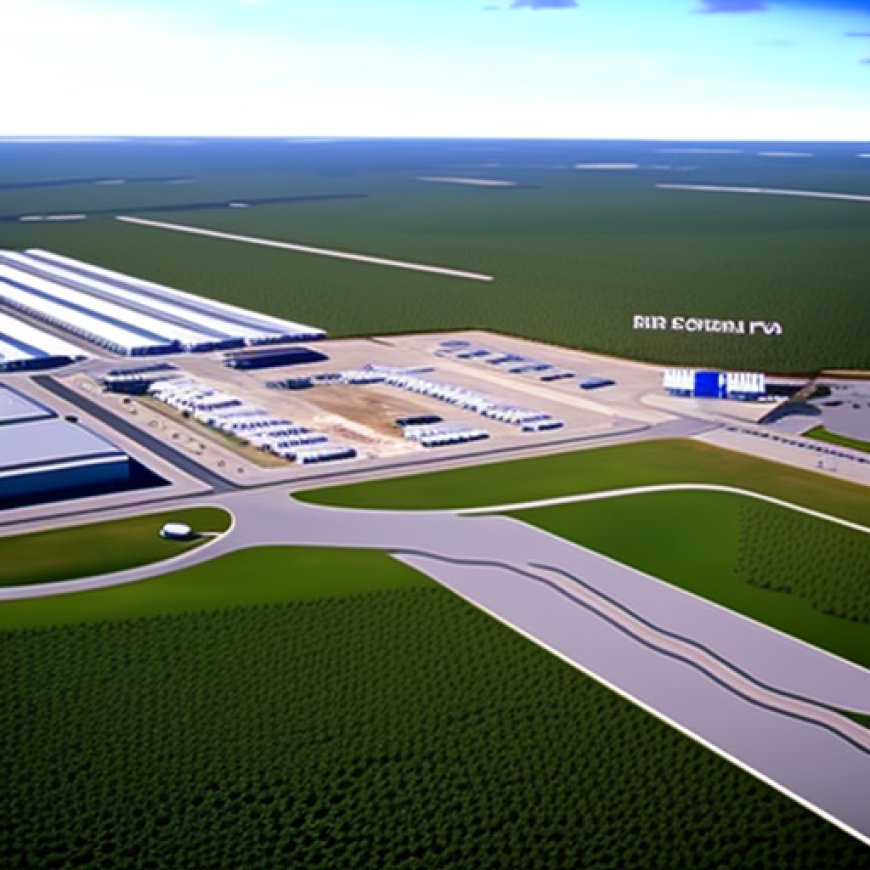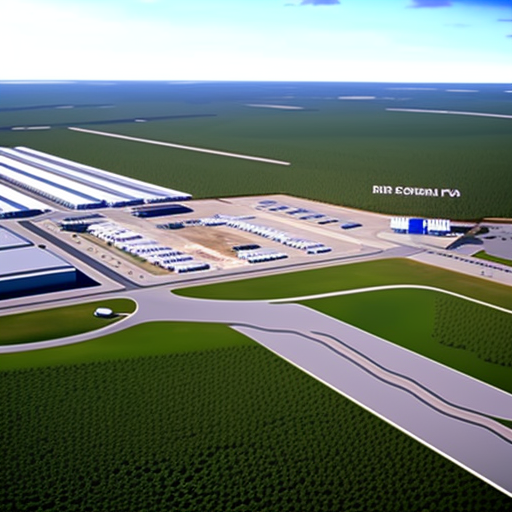DAQ Issues Air Quality Permit to Sapphire RNG facility at Sampson County Landfill
DAQ Issues Air Quality Permit to Sapphire RNG facility at Sampson ... NC DEQ


North Carolina Department of Environmental Quality Issues Title V Air Quality Permit to Sapphire Renewable Natural Gas
After thoroughly reviewing all public comments submitted during the public hearing and notice period, the N.C. Department of Environmental Quality’s Division of Air Quality (DAQ) is issuing a Title V air quality permit to Sapphire Renewable Natural Gas.
Sapphire Renewable Natural Gas plans to accept and process landfill gas onsite at Sampson County Disposal, LLC, in Roseboro. Currently, the landfill burns all its gas using flares, producing air pollution. Air emissions at Sapphire Renewable Natural Gas will be controlled by a waste gas thermal oxidizer, a candlestick flare, and a sulfur treatment system with two activated carbon vessels.
Community Concerns Addressed
In response to community concerns raised during the public process, DAQ required the applicant to conduct revised air dispersion modeling and provide additional information. The Division updated the permit and permit review with requirements related to testing, modeling, and operations.
Key Components of the Final Permit
- Site-specific emission data about toxic air pollutants in the facility’s landfill gas, rather than estimated values.
- Required analytical test of landfill gas and submission of the results to DAQ for review to confirm these site-specific values.
- Monitoring conditions for two additional toxic air pollutants.
- Estimated emissions for truck loading which will be considered an insignificant source.
- Conditions that ensure ambient levels of all pollutants beyond the facility’s fence line comply with emission standards, including applicable health-based standards.
Due to concerns regarding the presence of per- and polyfluoroalkyl substances (PFAS) at the Sampson County Disposal, LLC landfill, the air quality permit requires the company to conduct initial sampling of the inlet landfill gas for the presence of PFAS and disclose information related to PFAS concentrations.
DAQ also requested more detailed calculations, which indicate the expected operation will reduce facility-wide emissions of carbon monoxide by 76 tons per year, nitrogen oxide by 94 tons per year, and sulfur oxides by 73 tons per year.
Compliance with Laws and Regulations
The facility is required to follow all applicable federal, state, and local laws and regulations, including those related to public safety, transportation, and land use. The facility is also subject to recordkeeping requirements and regular inspections.
Additional Resources
Copies of the final permit, final permit review, hearing officer’s report, final environmental justice report, permit application, and a one-page project fact sheet are available online.
Si necesita esta información en español por favor llame al 919-609-2189 o mande un correo a Guadalupe.jimenez@deq.nc.gov.
Comunicado de Prensa (español)
SDGs, Targets, and Indicators
1. Which SDGs are addressed or connected to the issues highlighted in the article?
- SDG 3: Good Health and Well-being
- SDG 7: Affordable and Clean Energy
- SDG 11: Sustainable Cities and Communities
- SDG 13: Climate Action
- SDG 15: Life on Land
The article discusses the issuance of a Title V air quality permit to Sapphire Renewable Natural Gas, which plans to accept and process landfill gas. This is connected to SDG 3 as it addresses air pollution and its impact on public health. The use of landfill gas as a renewable energy source also contributes to SDG 7 by promoting affordable and clean energy. The article mentions the control of air emissions, which aligns with SDG 11’s goal of creating sustainable cities and communities. Additionally, the reduction of carbon monoxide, nitrogen oxide, and sulfur oxides emissions supports SDG 13’s objective of climate action. Lastly, the article mentions concerns about the presence of per- and polyfluoroalkyl substances (PFAS) at the landfill, which relates to SDG 15’s goal of protecting life on land.
2. What specific targets under those SDGs can be identified based on the article’s content?
- Target 3.9: By 2030, substantially reduce the number of deaths and illnesses from hazardous chemicals and air, water, and soil pollution and contamination.
- Target 7.2: By 2030, increase substantially the share of renewable energy in the global energy mix.
- Target 11.6: By 2030, reduce the adverse per capita environmental impact of cities, including by paying special attention to air quality and municipal and other waste management.
- Target 13.2: Integrate climate change measures into national policies, strategies, and planning.
- Target 15.1: By 2020, ensure the conservation, restoration, and sustainable use of terrestrial and inland freshwater ecosystems and their services.
Based on the article’s content, the targets mentioned above can be identified. These targets focus on reducing deaths and illnesses from pollution, increasing the share of renewable energy, improving air quality in cities, integrating climate change measures into policies, and ensuring the sustainable use of ecosystems.
3. Are there any indicators mentioned or implied in the article that can be used to measure progress towards the identified targets?
- Indicator 3.9.1: Mortality rate attributed to household and ambient air pollution.
- Indicator 7.2.1: Renewable energy share in the total final energy consumption.
- Indicator 11.6.2: Annual mean levels of fine particulate matter (e.g., PM2.5) in cities.
- Indicator 13.2.1: Number of countries that have communicated the establishment or operationalization of an integrated policy/strategy/plan which increases their ability to adapt to the adverse impacts of climate change.
- Indicator 15.1.1: Forest area as a proportion of total land area.
The article mentions the reduction of air emissions and pollutants, which can be measured using indicators such as mortality rates attributed to air pollution (Indicator 3.9.1) and annual mean levels of fine particulate matter in cities (Indicator 11.6.2). The use of landfill gas as a renewable energy source can be measured by the renewable energy share in the total final energy consumption (Indicator 7.2.1). The integration of climate change measures can be measured by the number of countries with established policies/strategies/plans (Indicator 13.2.1). Lastly, the conservation and sustainable use of ecosystems can be measured by the forest area as a proportion of total land area (Indicator 15.1.1).
4. Table: SDGs, Targets, and Indicators
| SDGs | Targets | Indicators |
|---|---|---|
| SDG 3: Good Health and Well-being | Target 3.9: By 2030, substantially reduce the number of deaths and illnesses from hazardous chemicals and air, water, and soil pollution and contamination. | Indicator 3.9.1: Mortality rate attributed to household and ambient air pollution. |
| SDG 7: Affordable and Clean Energy | Target 7.2: By 2030, increase substantially the share of renewable energy in the global energy mix. | Indicator 7.2.1: Renewable energy share in the total final energy consumption. |
| SDG 11: Sustainable Cities and Communities | Target 11.6: By 2030, reduce the adverse per capita environmental impact of cities, including by paying special attention to air quality and municipal and other waste management. | Indicator 11.6.2: Annual mean levels of fine particulate matter (e.g., PM2.5) in cities. |
| SDG 13: Climate Action | Target 13.2: Integrate climate change measures into national policies, strategies, and planning. | Indicator 13.2.1: Number of countries that have communicated the establishment or operationalization of an integrated policy/strategy/plan which increases their ability to adapt to the adverse impacts of climate change. |
| SDG 15: Life on Land | Target 15.1: By 2020, ensure the conservation, restoration, and sustainable use of terrestrial and inland freshwater ecosystems and their services. | Indicator 15.1.1: Forest area as a proportion of total land area. |
Behold! This splendid article springs forth from the wellspring of knowledge, shaped by a wondrous proprietary AI technology that delved into a vast ocean of data, illuminating the path towards the Sustainable Development Goals. Remember that all rights are reserved by SDG Investors LLC, empowering us to champion progress together.
Source: deq.nc.gov

Join us, as fellow seekers of change, on a transformative journey at https://sdgtalks.ai/welcome, where you can become a member and actively contribute to shaping a brighter future.







